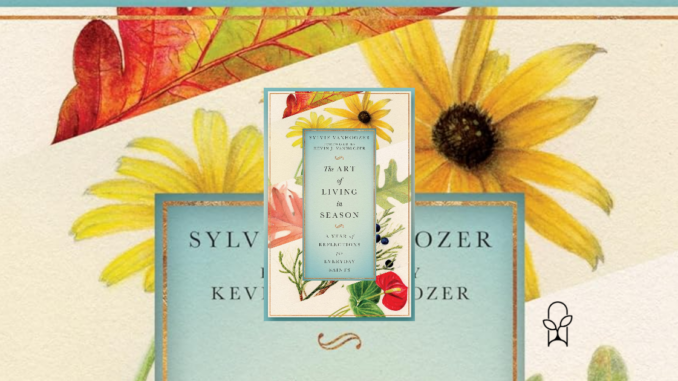
Published by IVP on April 9, 2024
Genres: Non-Fiction, Christian Life
Buy on Amazon
Goodreads

"What can I give him?”
Growing up in her native Provence, in southern France, Sylvie Vanhoozer learned about the traditional Provençal crèche. These nativity scenes were peopled by santons―“little saints”―each bringing their unique gifts to the baby Jesus. As her own life took her around the world, to England, Scotland, and the United States, she kept up the tradition of her native crèche in her own home, adding to it souvenirs from each new place where she found herself.
In The Art of Living in Season, Vanhoozer invites readers to join this communion of little saints and to follow them not only at Christmas but throughout the whole year. Each chapter introduces a new santon and opens up another aspect of our annual pilgrimage toward Christ. Structured as weekly reflections and illustrated with Vanhoozer's own botanical illustrations, this book invites us to follow Christ in our own places and seasons of life, beginning by keeping in step with the rhythms of nature and the church calendar.
The Art of Living in Season is a companion for everyday saints who wonder how they can follow Jesus―and what they can give him―wherever, whenever, and whoever they are.
In this unique book, Sylvie Vanhoozer explores the church calendar and the seasons of the year through the lens of santons, small clay figures that represent people bringing gifts to baby Jesus based on their everyday work and calling. She explains the roots of this Nativity tradition from her native Provence, and she shares shares how engaging with this cultural tradition and the everyday saints it represents has deepened her faith.
Throughout the book, she moves through an entire year of the church calendar, sharing thematic reflections, introducing different santons and what they represent, explaining traditions from Provence, and touching on elements of her own story. She also includes reflection points and applications for her readers, usually in a weekly format, and the book includes lovely illustrations that Vanhoozer has made of santon figures and different plants.
Chapters also include sections on “eating in season,” with information about different plants that are in season at different times of the year. Although I enjoyed the botanical illustrations and some of the details that she shared, I did not appreciate the occasionally insensitive ways that Vanhoozer wrote about people’s food choices. I agree that we lose a lot as a society and as individuals when we are disconnected from the earth’s rhythms, and that the international food supply network is fraught with ethical and environmental issues. However, Vanhoozer frames this too much as an individual problem, when it is profoundly systemic and most people aren’t in a place to do anything about it.
It requires time, effort, and financial privilege to eat a healthy and nutritious diet, let alone to manage your diet based on local farming. I am glad that Vanhoozer has found it so fulfilling to change her meal prep rhythms, but it greatly bothered me when she implied moral judgment to people who eat produce out of season. She connects this to greed, gluttony, and a lack of environmental sensitivity, but most people are just buying what’s available and what they can afford, and are trying put nutritious food on the table. Also, some people deal with dietary sensitivities and health issues that limit their ability to eat whatever is in season at the moment. Vanhoozer’s idealism is nice but out of reach for some people, and her judgment is unnecessarily harsh and out of place.
The Art of Living in Season: A Year of Reflections for Everyday Saints is a unique book that flows from the author’s cultural background and personal life, while also addressing universal experiences and core elements of the Christian faith. The author’s beautiful writing and art appealed to me, and I learned a lot from this book. However, if food-related issues are a particularly sensitive subject to someone because of finances, health problems, or a history of disordered eating, they should know that a significant section of this book comes back repeatedly to food, sometimes along with the author’s judgment. I found this aspect very disappointing, even though I enjoyed many other elements of the book.
